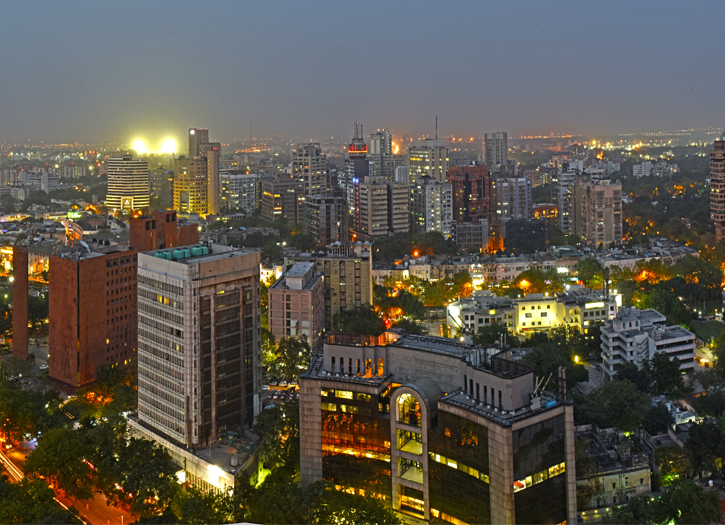Delhi has the third highest number of confirmed cases of COVID-19 pandemic in India after Maharashtra and Tamil Nadu. The total of infected people reported as on 22 September 2020 is 253,075 consisting of 5,087 deaths and 216,401 recovery. On 22 March, Delhi observed a 14-hour voluntary public curfew along with 75 district in India.The first case of coronavirus at Delhi was confirmed on 2 March when a 45 years old person from East Delhi, with a history of travel from Italy, has been tested to be positive for COVID-19.
Once the COVID lockdown came into effect in Delhi from 22 March onwards, the missionaries remaining in the Nizamuddin Markaz were trapped, and the functionaries began to seek assistance from the authorities for their evacuation.As of 4 April, more than 1000 cases, representing 30% all confirmed cases in India, were linked to the Nizamuddin event. Some 22,000 people that came in contact with the Tablighi Jamaat missionaries had to be quarantined. Many other members of the missionary group have also been booked for allegedly helping spread the disease, including by hiding in mosques, a police official claimed. However, the Government of India has denied that it is singling out Muslims.
On 12 March, the Delhi chief minister Arvind Kejriwal declared COVID-19 an epidemic in Delhi. This made the Epidemic Diseases Act, 1897 applicable to the territory. Schools, colleges and cinema halls were ordered to be closed until 31 March. Other public places including offices and shopping malls were to be compulsorily disinfected. Kejriwal advised people to stay away from public gatherings.On 13 March, the Indian Premier League matches were banned in Delhi, as were all sports gatherings. Conferences and seminars beyond 200 people were also banned. On 16 March, the ban was strengthened to all gatherings over 50 people, including those for religious, social, cultural, political, academic, sports etc. reason.
On 14 April, Modi extended lockdown till 3 May 2020 after recommendation from several state governments.On 19 April, CM Kejriwal announced that keeping in mind the current situation of Delhi, there will be no exemption in ongoing lockdown till the next week.By 28 April, the Delhi Government had given some relaxation during lockdown period, in following services such as Health care, Inter and intra state movement for health care staff including by air if necessary, shelter homes. All these relaxation for the areas which is not declared as containment zone.
On 4 May, the Ministry of home affairs announced the extension of lockdown from 4 May 2020 til 17 May 2020 at Delhi and declared all districts as red zone. Government and private offices will operate with 33% manpower but strength of Government officers up to Deputy Secretary level will be 100%. Standalone liquor shops having L6 and L8 licences and tobacco products shops will be open from 4 May.Industrial activities in special economic zones, industrial estates and townships, all manufacturing units of essential goods, standalone shops in neighborhood would remain open.On 18 May, the Central Government extended lockdown til 31 May 2020.
On 1 June, Lock down 5 or unlock phase 1 started and CM Delhi announced that Delhi border had been sealed for one week except for the persons have permissions for essential services. by this time, Delhi had surpassed most of the states in India, thus making biggest accounts of COVID patients everyday, with a spike of 2,000 cases in an average everyday. This made it difficult for the Delhi government to make further plans for the reopening. Delhi government issued an order for asymptomatic patients making seven days’ home isolation mandatory for all asymptomatic individuals arriving in the city via planes and trains. For symptomatic individuals, immediate Covid testing on arrival, institutional quarantining till the result is out, moving to a hospital or a COVID-19 Care Center depending on symptoms if positive, and home isolation for 14 days in case of a negative result.
On 13 April, in Delhi 14,036, COVID-19 testing had been done in which positive cases are 1,154 in total and percentage wise its 8.22%. Population of Delhi is 201,78,879 (20 million plus) falls under category of the states having population 11 to 37 million.







Add Comment